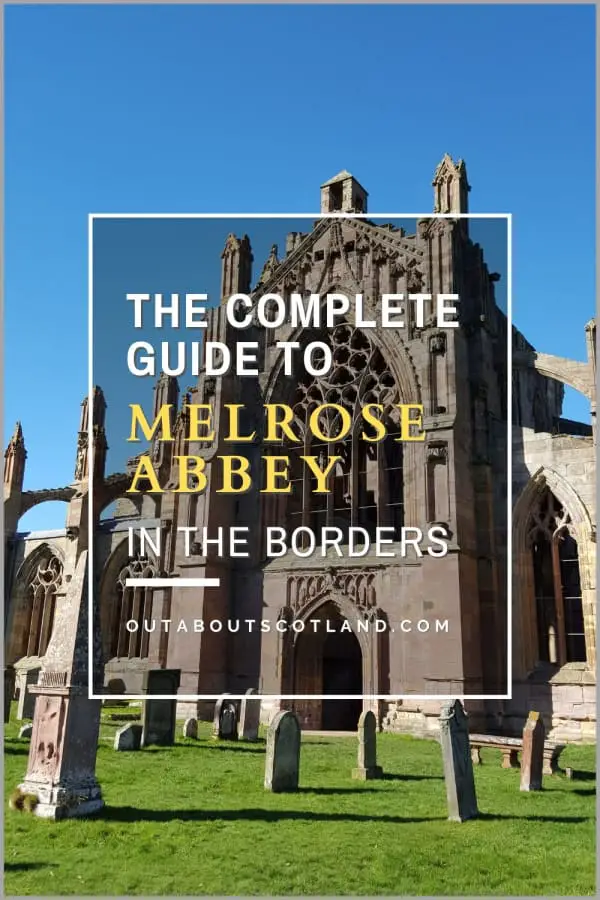Melrose Abbey is located near the village of Melrose in the Scottish Borders. It was founded in 1136 as Scotland’s first Cistercian monastery and is famous for being the burial site of Robert the Bruce’s heart. Historic Environment Scotland is in charge of managing the abbey and visitors can enter for a fee, or for free if they’re HES members.
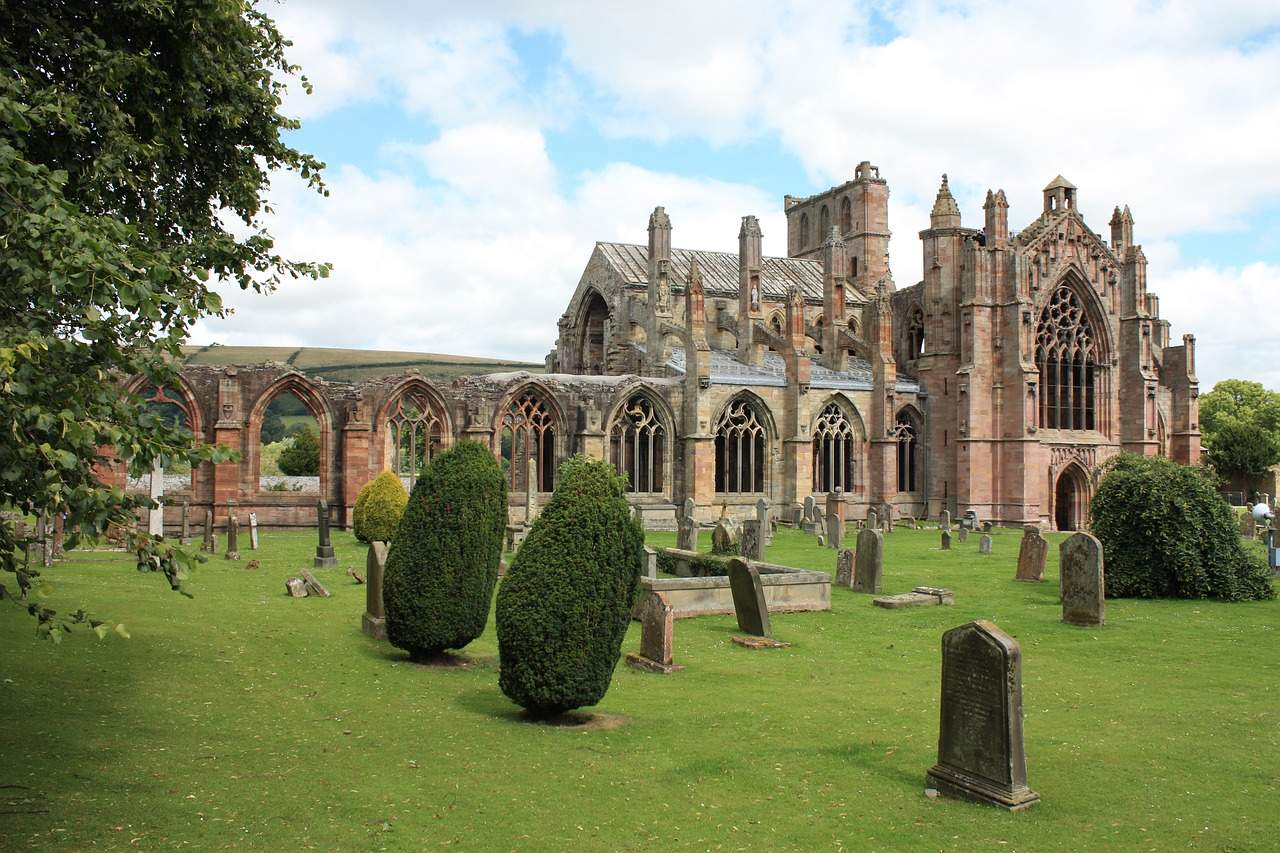
| Address: | Abbey Street, Melrose, Roxburghshire, TD6 9LG |
| Opening Hours: | 1 Apr to 30 Sept: Daily, 10 am to 5 pm Last entry 4.15 pm 1 Oct to 31 Mar: Daily, 10 am to 4 pm Last entry 3.30 pm |
| Admission Price: | Adult (16-64yrs) £7.00 Concession (65yrs+ and unemployed) £5.50 Child (5-15yrs) £4.00 Family (1 adult, 2 children) £14.00 Family (2 adults, 2 children) £20.00 Family (2 adults, 3 children) £24.00 |
| Parking: | Paid public car park nearby |
| Contact: | 01896 822 562 |
| Facilities: | Shop, toilets, picnic area, water refill |
Overview
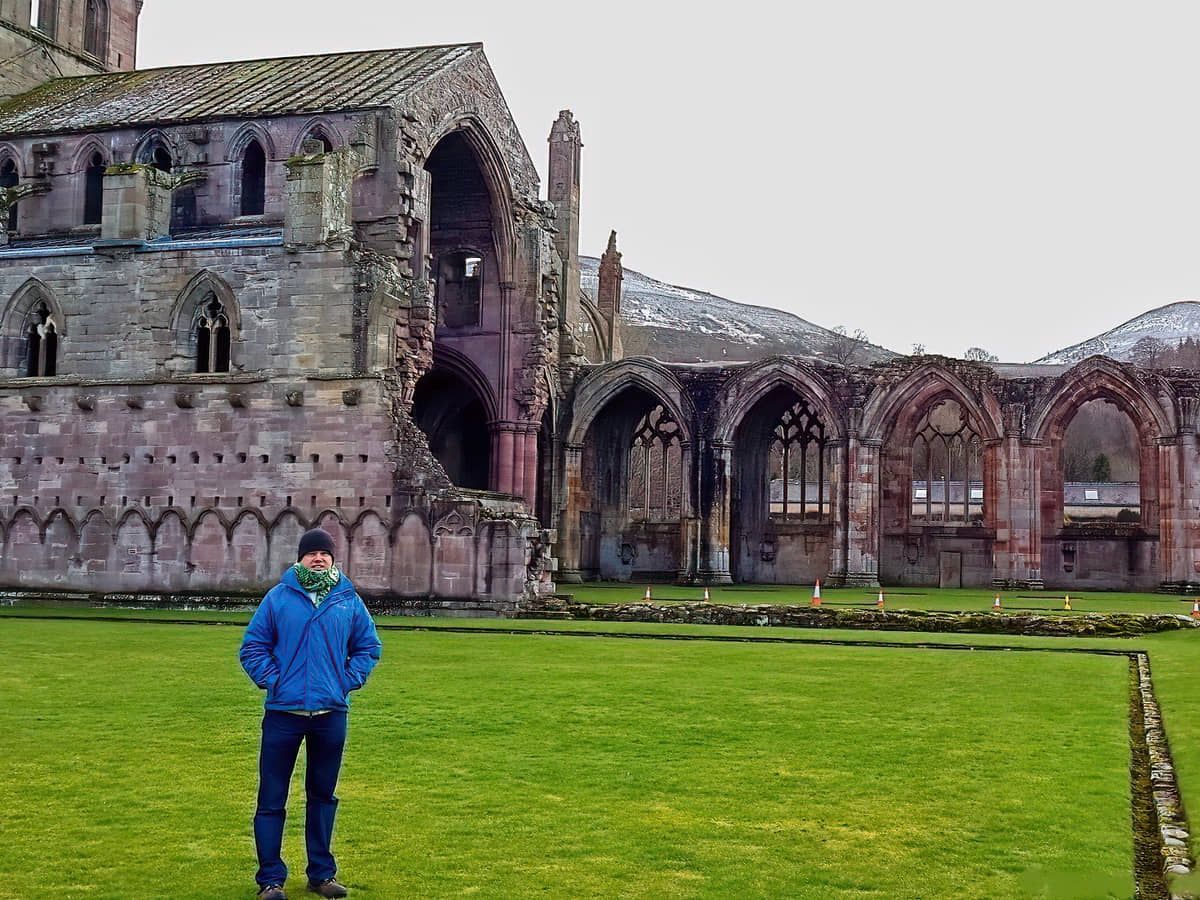
Melrose Abbey, located in the Scottish Borders, is a magnificent ruin of a 12th-century Cistercian monastery. Known for its striking Gothic architecture, it’s believed to be the burial place of Robert the Bruce’s heart. Its serene, haunting beauty attracts history enthusiasts and tourists from all over the world.
If you ever decide to head down to the Scottish Borders to get away from the busy attractions of Edinburgh and Glasgow, you might consider visiting the picturesque town of Melrose. Melrose is an area steeped in history that has been inhabited for thousands of years, and it’s there in the Tweed Valley where you’ll find Melrose Abbey, one of the most famous ruins in Scotland.
The abbey has existed for almost one thousand years, and due to its location close to the Scottish/English border, it was on the front lines of battles between the two nations throughout the Middle Ages. This is part of the reason it’s mostly in ruin, though enough of it is intact to give you a good insight into how impressive it would have looked in its heyday.
The presbytery at the east end is surprisingly well preserved and the exterior is lavishly covered in stone carvings that rival the stunning Rosslyn Chapel in Midlothian. Take a good look at the abbey walls and you’ll see hobgoblins, demons, angels, and even a pig playing the bagpipes. It’s a genuinely fascinating place.
The abbey is famous for being the final resting place of the heart of the 14th-century Scots king Robert the Bruce (his body is buried in Dunfermline Abbey), and there’s also a museum in the old abbot’s house that displays an impressive collection of mediaeval artefacts from the original cloister.
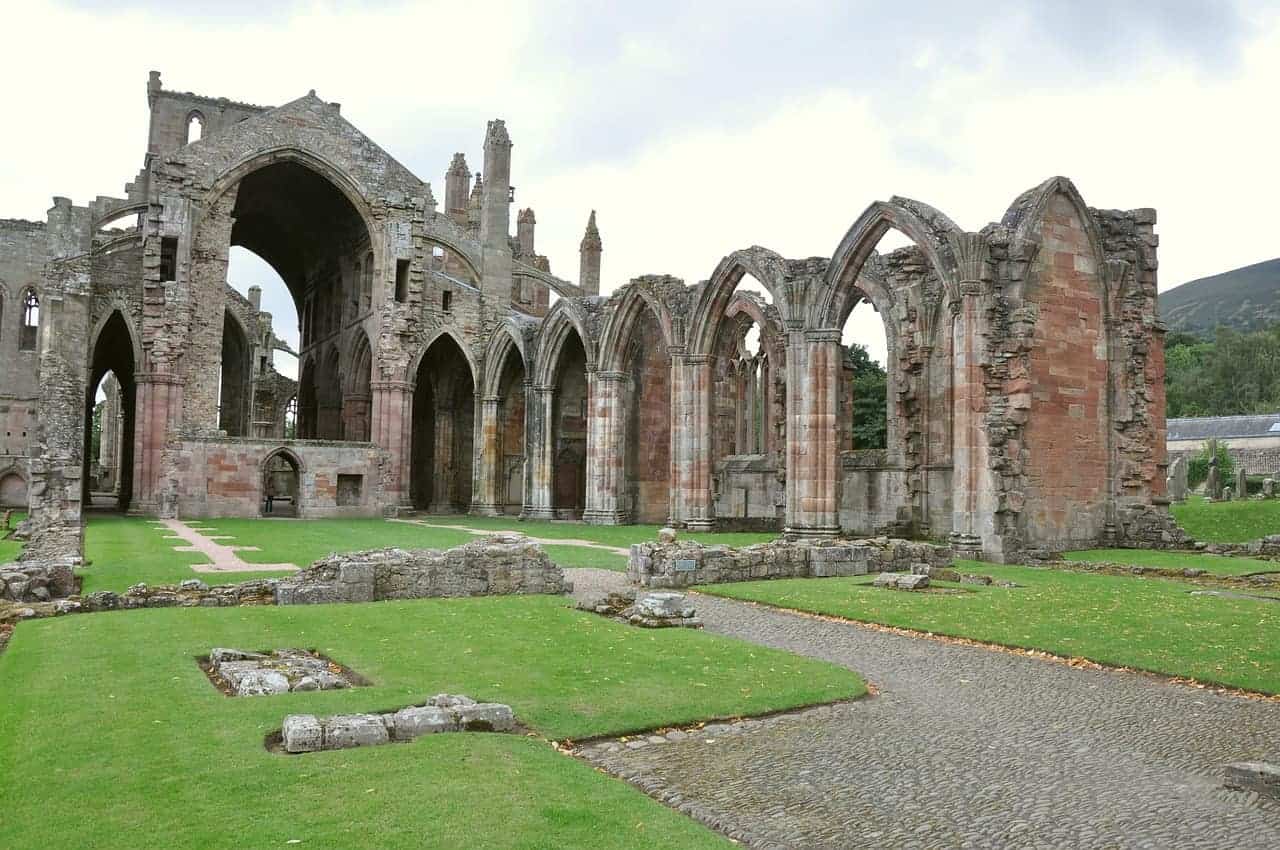
The Highlights
1: The setting in the Borders countryside is very picturesque, and there are superb walks in the nearby Eidon Hills. I recommend taking a look at the Walk Highlands website to find suitable trails.
2: There’s a great deal of history to discover at this attraction, and Historic Environment Scotland has installed lots of informative information panels, ensuring it’s educational for adults as well as children.
3: The abbey is situated in the beautiful town of Melrose, which boasts tranquil gardens and sweeping views of the surrounding countryside. The peaceful atmosphere and beautiful views make it a perfect spot for visitors looking to immerse themselves in Scotland’s natural beauty as well as its history.
Visiting Tips
1: Access to the tower’s rooftop is via a very narrow staircase. I don’t recommend climbing up there if you’re claustrophobic.
2: If you’d like to visit another beautiful abbey in the area, you’ll find Jedburgh Abbey just eleven miles away. The address is: Abbey Bridge End, Jedburgh, TD8 6JQ.
3: There’s another great historic attraction further down the A6091, heading west. Abbotsford was the home of Sir Walter Scott, and his restored house and gardens offer a superb family day out.
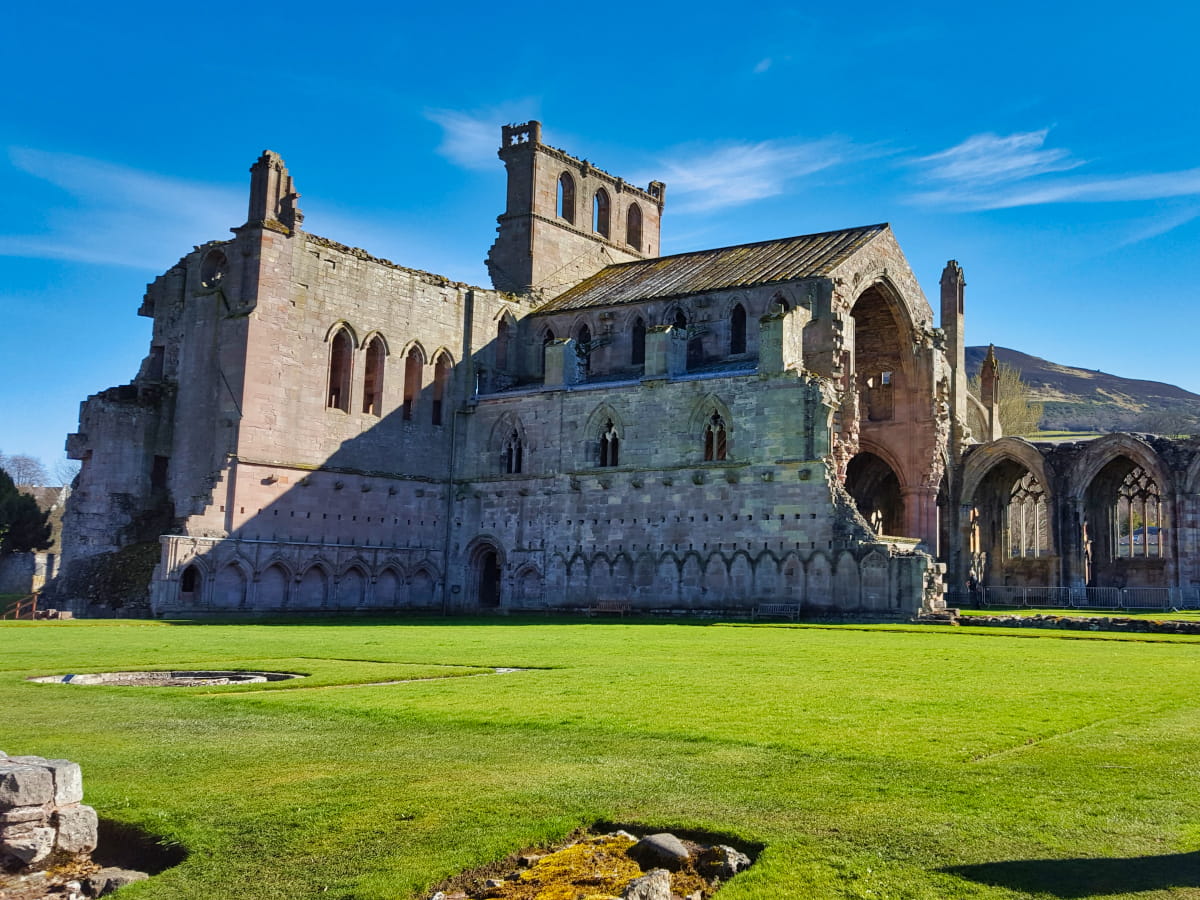
Tourist Information
Since the remnants of the nave and transept are quite large, Historic Environment Scotland (HES) has provided an audio guide that will explain the history of the buildings and tell you exactly what to look at as you make your way around the site. Alternatively, if you’d rather just explore it at your own pace, there are members of staff on hand to point out the most interesting features.
After leaving the main abbey building, I suggest heading to the Commendator’s House, which is where most of the exhibits are displayed that have been unearthed over the years. While it’s not a particularly big museum, it’s a nice addition to the site as it features a collection of fascinating artefacts.
As is usual with HES sites, the facilities at Melrose Abbey are pretty good, with a small gift shop, toilets, a picnic area, and history displays. If you have children with you, you can keep them occupied with the HES fact-finding quiz and word search, and if you’re accompanying disabled visitors, you’ll be pleased to know that most of the site has level surfaces.
If you’re a photographer, you’ll have ample photo opportunities to take fantastic elevated shots from one of the towers, and the fact the abbey is in the middle of such spectacular scenery means it can be easily combined with a stroll into Melrose and the surrounding countryside.
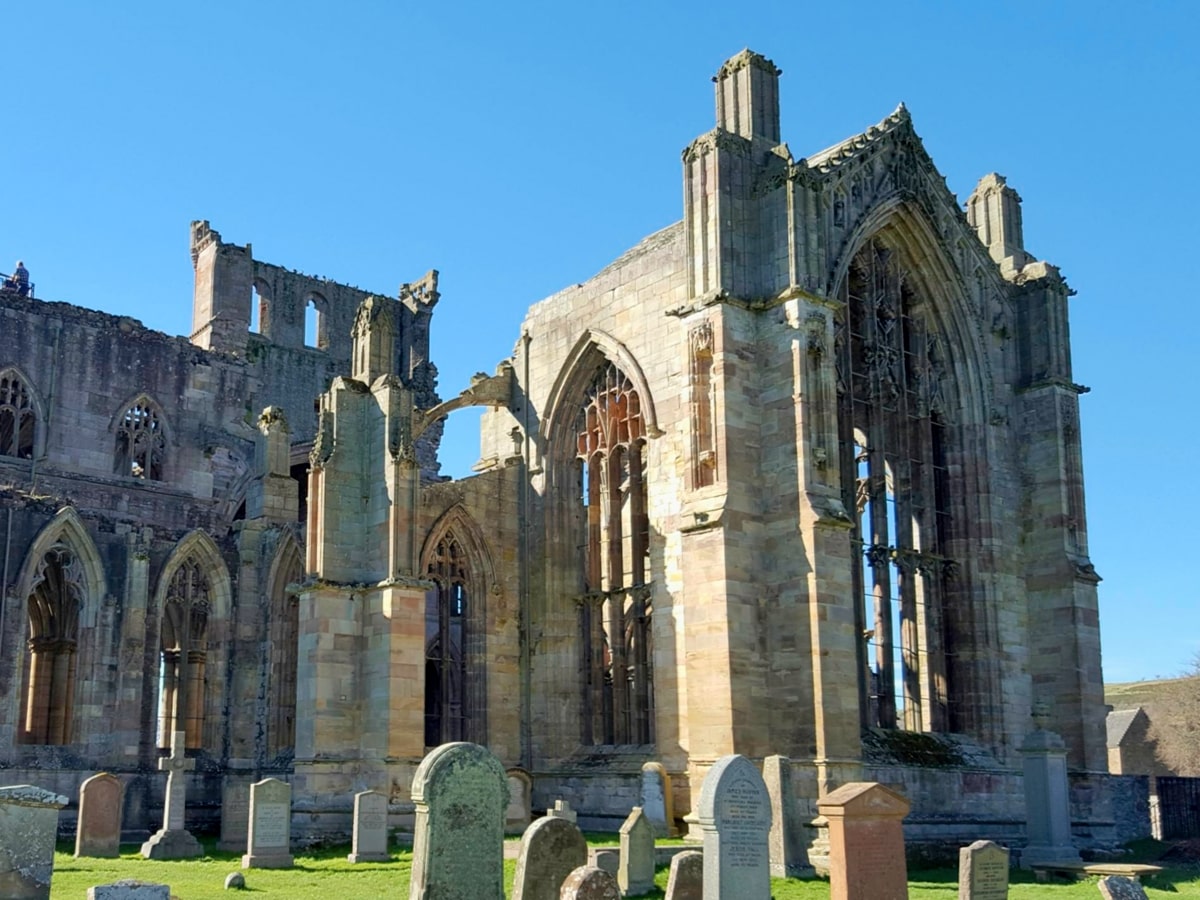
History
The abbey was founded by David I in 1136 in a show of power to prove his ownership of the long-fought-over Scottish Borders, and as it was located in an area that had associations with both St. Aiden and St. Cuthbert, it became associated with Cistercian monks.
A succession of wealthy abbots, some of whom had ties to Scotland’s royal family, like Waltheof of Melrose (the stepson of King David), endowed the abbey with a significant amount of wealth during the 500 years that it housed the monks.
The abbey eventually became quite powerful as a result of its wealth and influence, but that didn’t stop English forces from attacking it. Two particularly damaging attacks occurred in 1322 and 1385, when the armies of first Edward II and then Richard II destroyed large parts of the buildings, with the damage from the latter attack taking over 100 years to fully repair.
It was attacked again in 1544 by the English as they attempted to force Mary, Queen of Scots, to marry Henry VIII, but this time it was never fully repaired. Eventually, the ruined walls and failing roof led to a decline in the abbey’s use as a working monastery, and in 1590, the last monk at Melrose died, and it was abandoned for good.
In subsequent years, the abbey church was converted into a parish church for the expanding town of Melrose and was partially restored thanks to financial assistance from the Duke of Buccleuch before being handed over to state care in 1918.
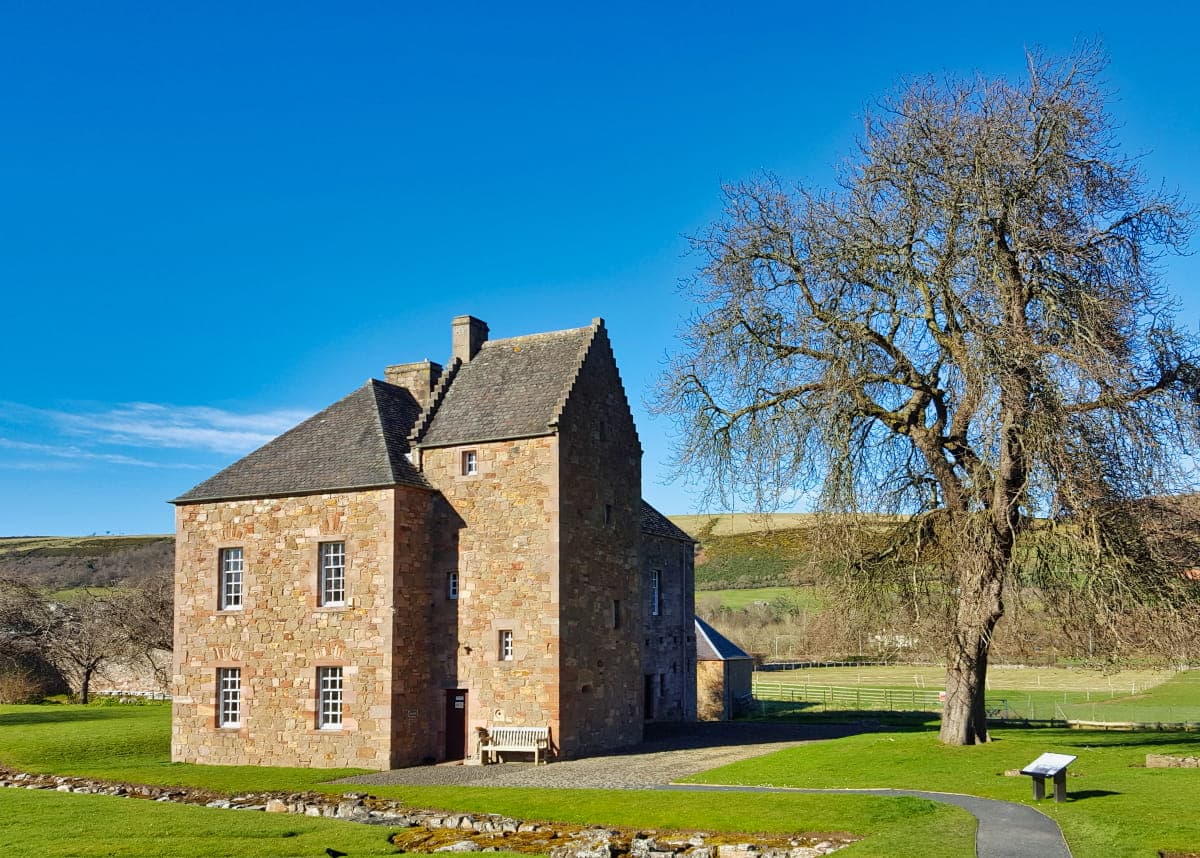
Things to Do
Explore the Abbey: Melrose Abbey is renowned for its ornate and intricate stonework. Spend time appreciating the detailed carvings of saints, dragons, and gargoyles. The abbey’s architecture is a masterful testament to the craftsmanship of the 12th century. Make sure you look for the bagpipe-playing pig on one of the arches!
Take a tranquil walk in the Abbey Grounds: The Abbey is surrounded by beautifully maintained grounds that provide a peaceful retreat with lush green lawns interspersed with well-kept flower beds and mature trees.
Visit the Commendator’s House Museum: Located within the Abbey complex, this museum holds the largest collection of medieval objects in Scotland. It’s a great place to learn about the Abbey’s history and the lives of the monks who once lived there.
Audio Guide: Historic Environment Scotland has provided an audio guide that will give you insight into the abbey’s inner workings during its heyday. The guides are included in the ticket price and can be listened to either on your mobile phone or on one of the audio devices provided at the ticket office.
Find Robert the Bruce’s Heart: Legend has it that King Robert the Bruce’s heart was buried at Melrose Abbey and a carved stone was laid in 1998 to mark the spot where it’s believed to lie. Keep the kids entertained by sending them on a quest to find the burial location of the king’s heart.
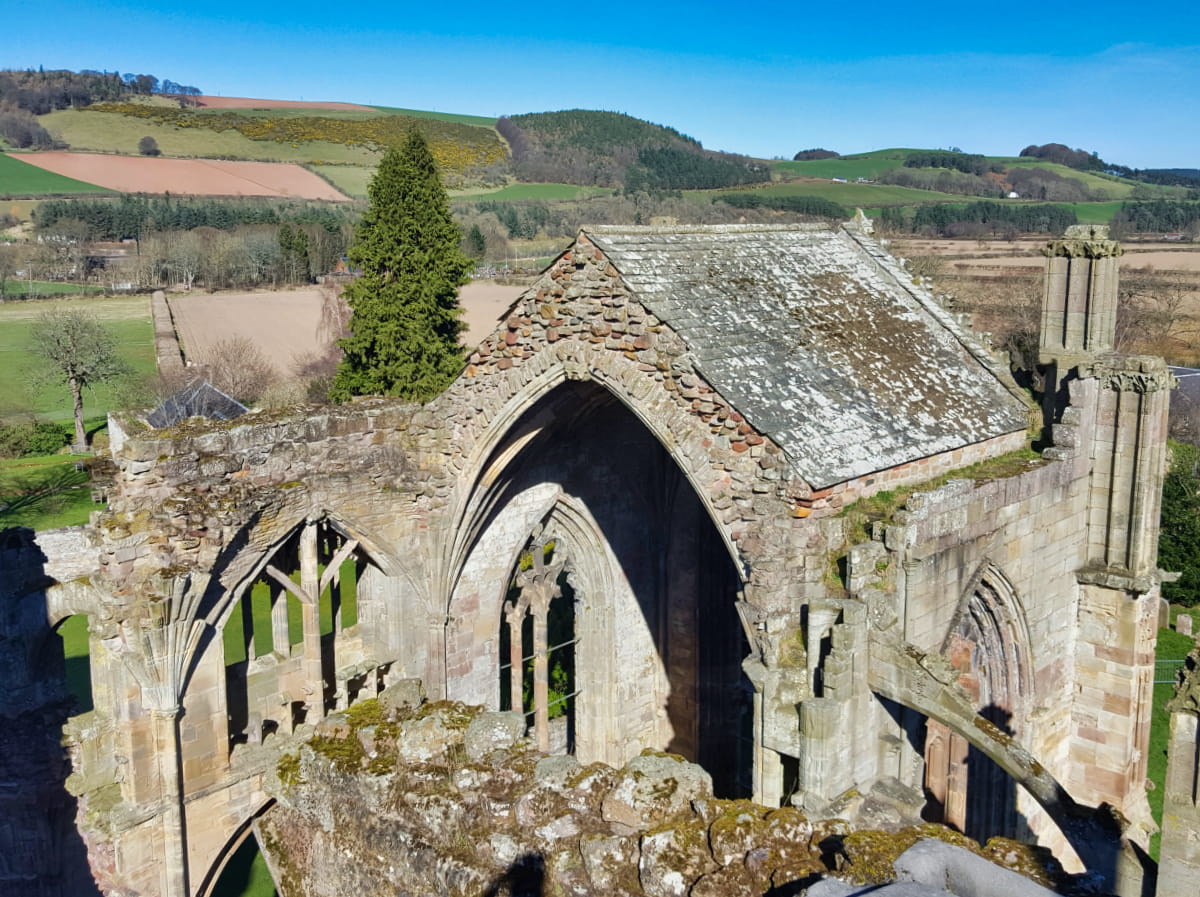
Things to Do Nearby
The Trimontium Museum Trust. Abbey House, Abbey St, Melrose TD6 9LG. 5-minute walk.
Trimontium Roman fort near Newstead is a site of international importance as it is the largest Roman fort and settlement north of Hadrian’s wall. The museum in Melrose serves to display a collection of Roman artefacts recovered from the area.
Leaderfoot Viaduct. Melrose TD6 9DQ. 7-minute drive.
An impressive 126-foot-high Victorian viaduct in a scenic location that spans the River Tweed. Parking for 3 cars only but there are walks all around the area and a footbridge – Drygrange Old Bridge – is situated nearby that allows visitors to cross the river.
Harmony Garden. St Mary’s Rd, Melrose TD6 9LJ. 2-minute walk.
This garden features 3 acres of manicured lawns and flowerbeds that are in the care of the National Trust for Scotland. The gardens offer views of Melrose Abbey and the Eildon Hills and they are also the setting for the Borders Book Festival held annually in June.
Abbotsford House. Abbotsford House, Melrose TD6 9BQ. 7-minute drive.
The stately home of famed Scottish novelist Sir Walter Scott. The house and gardens are open to the public for guided tours and there is also a visitor centre with a free exhibition, a café and a gift shop.
The River Tweed. 8-minute walk.
The Tweed runs for over 97 miles through the Scottish borders and one of the most popular places to explore it is Melrose where paths allow all abilities to walk along the river bank. Another option is a few miles west at Tweedbank where ‘The Black Path’ follows the river not far from Abbotsford House.
Frequently Asked Questions
Is Melrose near Peebles?
Yes, Melrose is near Peebles. The distance between the two towns is approximately 30 miles, which is about a 45-minute drive.
What is Melrose Abbey famous for?
Melrose Abbey in Roxburghshire, Scottish Borders, is a scheduled monument that is the final resting place of Alexander II and other Scottish kings and nobles. It is also reputed to contain a lead container with the heart of Robert the Bruce.
Who destroyed Melrose Abbey?
Richard II of England destroyed Melrose Abbey in 1385. Due to its location near the English border, it suffered several times at the hands of invading armies, with the last assault occurring during the English Civil War of 1642–1651.
Can you get married at Melrose Abbey?
Yes, you can get married at Melrose Abbey. It’s a beautiful and historic location that makes for a unique and stunning wedding venue.



